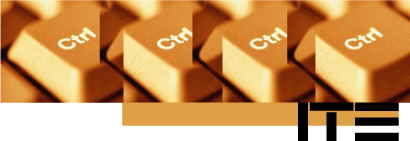Frequently Asked Questions
Q: [What kind of system do I need to run
Inertia]
A: [There
are several different options when deploying the Inertia software.
Each has advantages and disadvantages that must be weighed in light
of your particular situation.
Operating System Options
Terminal Services Deployment – This uses the same physical architecture as a standard deployment with one computer acting as a server, and other machines as clients which connect to the server. The difference is that with a terminal server, the server machine actually runs all of the programs that the client appears to be using. The terminal server holds both the data tables and all of the user-interface programs, and when the client signs in, the terminal server runs the program and simply exchanges screen, mouse and keyboard information back and forth with the client over the network. This exchange represents only a small amount of data which would not overwhelm any wi-fi networks. In addition to the reduced network traffic, the terminal services deployment offers the ability to sign in no matter where the client is physically located (You can log in from the store, from your house, from the road wherever you have an internet connection). The server machine must be very powerful since it is handling the processing load of all of the clients combined, but conversely, client machines can be wimpy. ITE owns and operates all the required Server machines in a Secured Server Farm located at a Co-Location facility. Performance in a terminal service environment is not dependant on the client machine, so client machines can be old and outdated, and they never need to be upgraded – as long as they run at least Windows 98.
LAN Connectivity Options
Ethernet – The 100 Mbit Ethernet is the standard LAN connectivity choice. It is secure (no data being transmitted through the airwaves), fast (presently 10 times faster than the most common Wi-Fi solutions) and cheap (you only need to buy the phone cord looking cableing). The major drawback is the need to physically run cable from each computer to the router and the aesthetic setbacks this can cause. So-called gigabit Ethernet (1000Mbit) is hitting the market and becoming more reasonably priced, and while ten times faster than standard Ethernet, it still suffers from the same drawbacks in addition to its somewhat higher pricetag.
Wi-Fi – This is the generic term used to describe wireless network access. The advantage of wi-fi, of course is that one need not run wires. The disadvantages are
· Security - It is getting better with the introduction of the Wi-Fi Protected Access standard, but still, you’re transferring your data to anyone in about a 300 foot radius around your PCs. In your case its probably not a significant issue.
· Range – The range is,about 300 feet line of sight, but this is reduced if you have walls or windows or obstructions between the PC and the router.
· Speed - Although the latest incarnation of the 802.11 standard boasts speeds which are a match for the 100 Mbit Ethernet, this information is based on future upgrades. Right now the maximum speed - in an optimal environment - is 54Mbit; which is about half the speed of standard Ethernet. Again, physical obstructions reduce the speed at which the computers are able to communicate.
· Cost - In addition to the router, you will need a wireless access point ($250) and a wireless network card ($120) in each client machine in place of a standard Ethernet card ($15).
- Windows XP over Wi-Fi - It is an okay option if you spend the money to get the high-speed variation and if you can actually get the advertised speeds in your location. It is easy to implement, flexible and moderately priced, but the screens will come up somewhat slower.
- Windows XP over Ethernet – Combines guaranteed speed with the greatest affordability. This is our standard recommended setup.
- Terminal Services over Wi-Fi – Offers excellent speed, the greatest versatility, but potentially has the highest cost. A very desirable option should budget permit
- Terminal Services over Ethernet – Offers the best speed, moderate cost, and excellent versatility. Another good option.]
Q: [When is the Chart of Accounts -
General Ledger updated]
A: [The General Ledger
system in Inertia is real time. Each transaction is posted to
the General Ledger with amounts, Debit account, Credit account and
other pieces of information to help any accountant or auditor ease
of doing their jobs. You will see that immediately after
creating a sale and taking a receipt of payment, the Income account,
the Undeposited Funds account, Account Receivable account, Inventory
account, Sales Tax Liability, and Customer Deposit accounts will all
show the corresponding postings. One might ask why a posting
to the Customer Deposit account exists when there is no Customer
Deposit and the customer does not have an order, but was given an
invoice for goods taken. Inertia works on the Base Line
principle and basis of integral mathematics. What does this
mean? The any process taken as the integral from zero to
infinity will give you the baseline process. With this
mentality, a Sales Invoice is a Sales Order for a small portion of
time, and when compared to infinity an immediate sale over the
counter looks no different than giving the customer Net 30 terms.
In other words, the two seconds it took the customer to pay the bill
looks no different on a time scale than 30 days when compared to an
infinite amount of time. (Sorry .... have to have a little "Geekdom")
]

